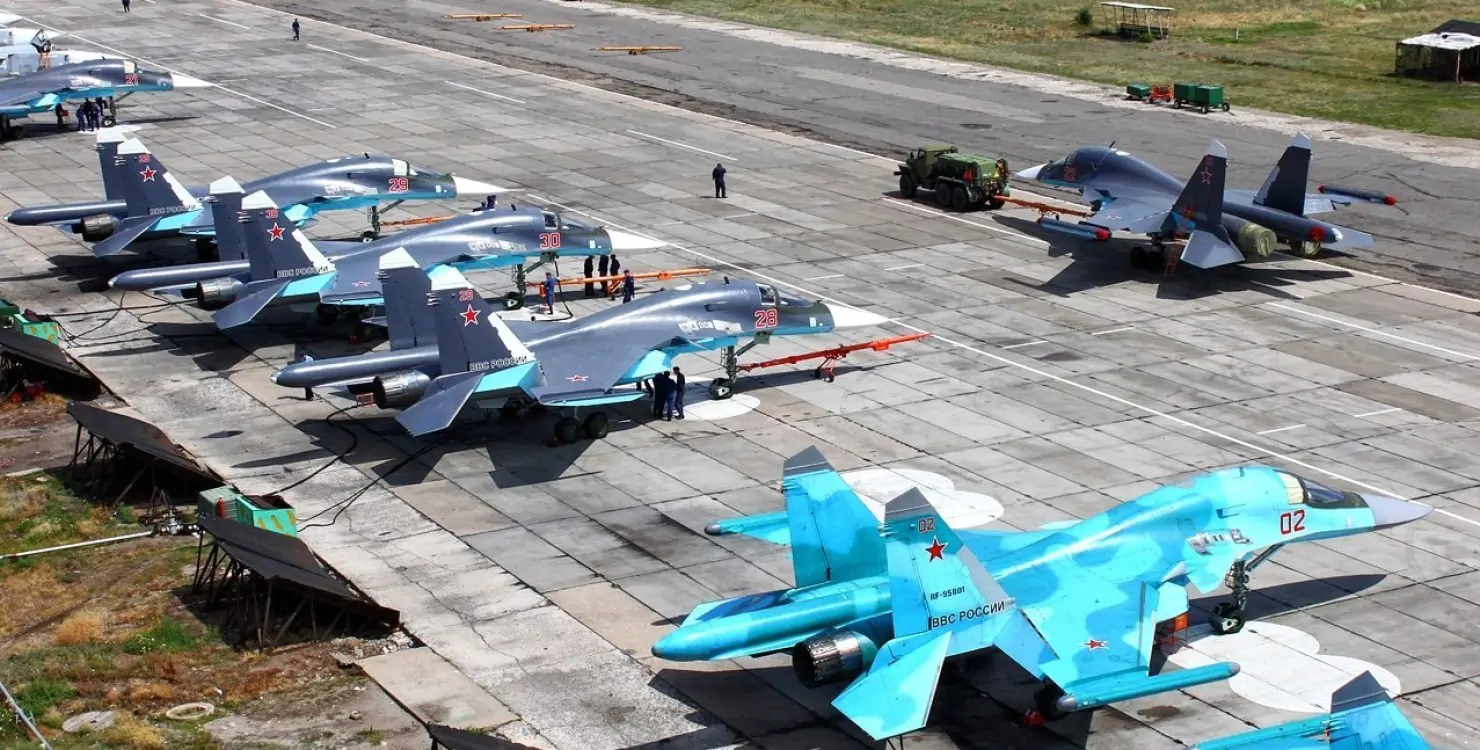At some point early Sunday afternoon, Tehran time, a helicopter carrying Iranian President Ebrahim Raisi crashed in northern Iran, a local military commander told state news agency IRNA. At around sunrise on Monday, about 18 hours after the initial reports, rescuers located the crash site and reported no survivors.
While unconfirmed by Tehran, initial reports are that the Iranian president did not survive.
JOIN US ON TELEGRAM
Follow our coverage of the war on the @Kyivpost_official.
Shortly before 11:30 p.m. on Sunday, local authorities said they had identified the general area of the accident in the remote, densely fogged mountains of the East Azerbaijan province, thanks to transponders inside the helicopter. After that, the only lead was from a Turkish Akinci drone which was reported to have located a heat source in the remote mountains at about 4 a.m. when temperatures were approaching freezing. The nearest major city to the crash site is Tabriz.
CNN reported at about 6:30 a.m. on Monday, Tehran time, that rescuers had determined that all nine passengers had died aboard that Bell helicopter, one of three in a formation returning from the dedication of a new dam.
Iranian authorities had claimed they could communicate with two of the nine passengers aboard the rotary-wing aircraft, who allegedly reported that the impact “was not severe,” Iranian Vice President for Executive Affairs Mohsen Mansouri told the country’s FARS news agency.

Russia Opposes Western Peacekeepers in Ukraine
Traveling with Raisi were Foreign Minister Hossein Amirabdollahian, the governor of Iran’s East Azerbaijan province, and six other officials and security staff.
The governments of both Turkey and Russia announced that they were sending advanced aircraft and search-and-rescue units equipped with night-vision technology to help locate the survivors in such poor visibility and remote and rugged terrain.
Many Iran experts interviewed on the BBC and American news programs on Sunday, including former US Secretary of Defense Leon Panetta, said that if the 63-year-old Raisi had been killed in the crash, it is very likely that Tehran would delay the release of that information for fear of domestic reaction.
Iran is a major supplier of weaponized drones for Moscow, and Raisi, a staunch Kremlin ally, had been a fierce opponent of Western aid for Ukraine during Russia’s invasion.
Imagens da Câmera de Imagem Térmica do Drone de Vigilância de Longo Alcance Turco Bayraktar 'Akıncı' (AKINCI07), mostrando uma Assinatura de Calor que se acredita ser o Local do Acidente do Helicóptero do Presidente iraniano Ebrahim Raisi no noroeste do Irã. pic.twitter.com/HX6SJPKzHA
— Área Militar (@areamilitarof) May 20, 2024
Russian strikes that killed 11 targeted recreational center
Waves of air strikes on the Kharkiv region on Sunday killed at least 11 civilians, including a pregnant woman, as Russian forces rained missiles on the outskirts of the regional capital and two villages further east.
One of the targets of the first round of missile strikes was a recreational center, killing six and injuring at least 27 there. The missiles were launched from Russia’s neighboring Belgorod region, which itself has been the recipient of Ukrainian strikes as Moscow’s forces have mounted a week-long offensive on the countries’ shared border.
“Among the wounded is a police officer and an ambulance paramedic who came to help people after the first hit,” the Kharkiv prosecutor’s office said in a statement. It claimed that Moscow is “once again using the tactic of ‘repeated strikes’... aimed at killing civilians, law enforcement officers, medics and rescuers.”
Later on Sunday, shelling from Russian multiple-launch rocket systems killed five people, according to regional governor Oleg Synegubov, in the villages of Novoosynove and Kivsharivka, about 30 miles east of Kharkiv, near Kupyansk.
“The world can put an end to Russian terror,” President Volodymyr Zelensky posted to social media. “To achieve this, the lack of political will among leaders must be overcome. Two Patriots for Kharkiv will fundamentally change the situation. Air defense systems in our other cities, as well as sufficient support for our warriors on the frontlines, will ensure the defeat of Russian terror.”
As Russian air strikes have intensified in the northeastern border area since Moscow’s initial ground assault there began on May 10, both Germany and the United States have proposed sending an extra Patriot missile system each to Ukraine as soon as possible.
Tomorrow, a Day of Mourning has been declared in Kharkiv and the region
— Kate from Kharkiv (@BohuslavskaKate) May 19, 2024
"As a result of the shelling of the villages of Kivsharivka, Novoosynove in the Kupyansk community and Malodanylivka community, the occupiers took the lives of 11 people. Among the dead is a pregnant woman.… pic.twitter.com/X2Il0l7Tjd
Rolling blackouts will continue “at least through the summer” and maybe beyond
The CEO of Ukraine’s power grid operator, Volodymyr Kudrytskyi, said on a newscast Sunday that the current blackouts to residential consumers will continue “for months,” and that a schedule of hourly power outages will likely be implemented on Monday, initially running from 6 p.m. to midnight.
“Compared with last week, weather conditions are expected to be more favorable, and the temperature is likely to rise. Therefore, consumption will be slightly lower than last week. We hope this will enable us to avoid outages at night, as was sometimes possible this week, and during peak consumption in the morning,” the Ukrenergo chief said.
He said these planned outages could last, potentially, into next winter.
“Under the current conditions, there will be rolling blackouts until generation is restored. That will take months. And that’s only if there are no further attacks on the energy infrastructure. During the summer, autumn and next winter, we must be prepared for rolling blackout schedules to be implemented at times.
We are in a situation where we have a huge shortfall in electricity generation because it is not possible to repair power plants quickly after such severe damage. So shortages will arise from time to time, and power outages and blackout schedules may resume from time to time. We all need to be ready for this.”
🇺🇦🚨‼️ BLACKOUT IN KYIV: Authorities in Ukraine announced today that power outages are expected to persist until at least the end of August or possibly longer.
— TabZ (@TabZLIVE) May 16, 2024
This projection comes as a response to the severe shortage of power generation capacity and the inability to offset it… pic.twitter.com/btiIKKKiud
AFU claims that it has sunk another Russian minesweeper
The Ukrainian Armed Forces (AFU) General Staff claimed on Sunday on Facebook that its naval forces destroyed the Russian minesweeper Kovrovets over the weekend. No information was released on where the attack occurred or what weapons were used.
Ukrinform reported, however, that explosions were heard in Sevastopol (traditionally the home of Russia’s Black Sea Fleet) Yevpatorii, Dzhankoi, Armiansk, and on the northern outskirts of Simferopol. “Three strikes were recorded at one location, at one of the ships in the area of the Engineering Bay of Sevastopol,” the state news agency wrote.
The Kovrovets was a Yurka-class minesweeper with a crew of 68 seamen and two 30mm AK-230M naval guns. These are Soviet-era ships built between 1963 and 1970 under Project 266 Rubin, capable of detecting mines up to 150 meters deep.
In February, the Ukrainian military estimated that it had already knocked out about a third of all of the Russian naval vessels (25 out of 80) deployed to the Black Sea to support the full-scale invasion, and another 15 had to be sent to the docks for repairs.
The official Kyiv tally of destroyed Russian naval vessels is now 27 ships since February 2022.
Another bad day for the russian Black Sea Fleet.
— Defense of Ukraine (@DefenceU) May 19, 2024
Overnight, Ukrainian defenders destroyed a russian minesweeper Project 266M "Kovrovets".
Great job, warriors! pic.twitter.com/ol4reKtuN6
You can also highlight the text and press Ctrl + Enter









